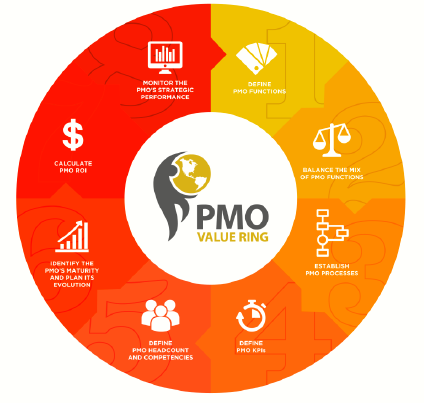Unlocking PMO Maturity: A Strategic Guide to Evolving Your Project Management Office
Assessing and Elevating Your PMO Maturity to Deliver Greater Value
"Assessing and improving PMO maturity is a continuous journey that aligns functions with organizational objectives, driving maximum value for stakeholders."
Follow me for more Project Management Insights: LinkedIn | LinkedIn Newsletter
The maturity of your Project Management Office (PMO) plays a critical role in the success of your organization’s projects. Understanding how to assess and improve your PMO maturity can unlock significant value, improve stakeholder satisfaction, and streamline operations. Your PMO's maturity is directly correlated to the degree of value it delivers to your organization. As a PMO leader, it's essential to recognize that maturity isn’t a one-size-fits-all concept and different organizations require different maturity models based on their unique needs.
One of the most widely adopted frameworks for assessing and improving PMO maturity is the PMO Value Ring, developed by the PMO Global Alliance in collaboration with 122 experienced PMO leaders from different countries. Based on global best practices, this methodology provides a scalable, customized approach for improving PMO functions across three key dimensions: strategic, tactical, and operational. It helps PMO leaders align their functions with organizational objectives and continuously enhance processes to maximize stakeholder value. The PMO Value Ring methodology offers a structured, step-by-step process for setting up new PMOs or assessing and redesigning existing ones.
In this edition of The PM Playbook, we explore the concept of PMO maturity, how to assess your PMO's maturity level, and how to improve its maturity level over time.
What You’ll Find in This Article:
Understanding PMO Maturity: Defining Levels and Assessing Maturity
How to Use the PMO Value Ring Methodology
Breaking Myths About PMO Maturity and Evolution
Key Strategies for Aligning PMO Functions with Stakeholder Expectations
Developing Action Plans for Improving PMO Maturity
Understanding PMO Maturity: Defining Levels and Assessing Maturity
PMO maturity refers to the capability of your Project Management Office to consistently deliver value to stakeholders by improving its processes, structures, and functions. It is not just about the maturity of project management practices but also about how effectively these practices are applied within the organizational context to drive project success. The first step in assessing PMO maturity is understanding the different levels, ranging from basic, ad-hoc processes to fully integrated strategic functions. These levels include the initial, repeatable, defined, managed, and optimizing stages of maturity.
Organizations can leverage this framework to assess their PMO's current state and identify steps to improve its effectiveness. Assessing maturity levels allows you to pinpoint the specific areas that require focus, such as project management practices, alignment with strategic goals, or stakeholder engagement. By understanding these levels, PMO leaders can make informed decisions about how to improve their offices systematically.
Key Points on PMO Maturity Levels:
Initial: PMOs at this level have basic processes but lack consistency and integration with the organization's overall strategy.
Repeatable: At this stage, PMOs have standardized project management processes but may not yet be fully optimized or aligned with strategic goals.
Defined: PMOs develop and enforce clear guidelines and best practices for project management across the organization.
Managed: PMOs at this level have comprehensive project management systems that are continually monitored and controlled to ensure efficiency and success.
Optimizing: These PMOs continuously improve their processes and adapt to new challenges, ensuring project outcomes align with organizational goals.
Pro Tip: Use a benchmarking tool, such as the PMO Value Ring, to assess your PMO's maturity. This tool helps evaluate maturity levels based on strategic, tactical, and operational approaches and provides a roadmap for future improvements.
How to Use the PMO Value Ring Methodology
The PMO Value Ring methodology is a structured framework to help organizations assess and manage their PMO’s maturity. Developed in collaboration with PMO leaders worldwide, this methodology incorporates global best practices and provides a scalable approach to improving PMO functions. The methodology focuses on a holistic approach by evaluating PMO functions across strategic, tactical, and operational dimensions. Using this model, organizations can identify areas of improvement, set maturity targets, and create actionable plans to evolve their PMOs.
The value of the PMO Value Ring lies in its ability to tailor the assessment to the organization's unique needs. It provides a clear, standardized way to assess where your PMO stands and what adjustments are necessary. By working within this methodology, organizations can focus on high-impact areas, improving their PMO maturity while keeping stakeholders aligned.
Key Points on PMO Value Ring Methodology:
Holistic Approach: The model evaluates PMO functions across three categories: strategic, tactical, and operational.
Assessment Tool: It provides a comprehensive framework for evaluating the current maturity level and setting improvement goals.
Action Plan Development: Based on the assessment, organizations can develop tailored action plans to guide the PMO’s growth.
Global Best Practices: The methodology incorporates insights from over 4,500 professionals across 65 countries.
Pro Tip: Use the PMO Value Ring methodology to assess your current PMO performance, then develop a roadmap for maturity evolution that aligns with your organization's long-term strategic objectives.
Breaking Myths About PMO Maturity and Evolution
One common myth in the PMO community is that maturity only comes from transitioning a PMO from an operational to a strategic function. While PMOs with a strategic focus are often seen as more mature, maturity is determined by how well a PMO delivers value, regardless of its operational or strategic focus. Another misconception is that all PMOs must evolve from operational to strategic over time. However, a PMO's maturity is not about the type of function it performs but how sophisticated and valuable its functions are.
A fully evolved PMO doesn’t necessarily require a shift in focus from operational to strategic; it needs to adapt and mature continuously within its context. The true measure of PMO maturity is its ability to serve the organization’s needs effectively. When assessing PMO maturity, it’s crucial to challenge conventional ideas of what "maturity" means to understand the practical evolution of PMOs better.
Key Points on PMO Myths:
Maturity Isn’t About the Function: Maturity is more about the quality of the function provided than its categorization as strategic, tactical, or operational.
Evolution Isn’t Linear: A PMO does not necessarily evolve from operational to strategic but rather evolves in the sophistication of its processes within its function.
Value Drives Maturity: PMO maturity is about how much value the PMO creates for its stakeholders through sophisticated and effective execution.
Pro Tip: Challenge assumptions about your PMO’s maturity by reassessing its current functionality. Instead of focusing on whether it’s strategic or operational, evaluate the sophistication of its services and how well those services align with your stakeholders’ needs.
Key Strategies for Aligning PMO Functions with Stakeholder Expectations
Aligning your PMO functions with stakeholder expectations is critical for ensuring that the PMO delivers tangible value to the organization. Stakeholders have different expectations, and PMO functions must be flexible enough to meet these diverse needs. PMOs can tailor their approach and services by understanding stakeholders' strategic, tactical, and operational demands. Aligning PMO functions with stakeholders’ expectations helps avoid misalignment, reduces resistance to change, and improves project success rates.
Maintaining alignment requires continuous engagement and communication with stakeholders. PMOs must regularly assess stakeholder needs and ensure that their functions are evolving to satisfy these needs. With clear communication and alignment, PMOs can ensure they deliver value and grow their organizational influence.
Key Points on Aligning PMO Functions:
Understanding Stakeholder Needs: Regularly assess and understand what stakeholders expect from the PMO.
Tailoring Services: Align PMO services based on stakeholders' needs, whether strategic, tactical, or operational.
Stakeholder Communication: Communicate regularly with stakeholders to ensure their needs are met and that they understand the PMO’s value.
Pro Tip: Create a stakeholder engagement plan with regular check-ins and feedback loops to ensure your PMO functions align with evolving expectations.
Developing Action Plans for Improving PMO Maturity
Once you’ve assessed your PMO’s maturity, the next step is developing an action plan for improvement. This plan should outline steps to raise maturity across strategic, tactical, and operational functions. Identifying key areas for improvement and defining measurable milestones is essential to track progress. Whether refining project management processes, increasing stakeholder engagement or improving the PMO's decision-making capabilities, a clear action plan will guide your PMO toward a higher level of maturity.
Effective action plans are data-driven and should be based on real-world feedback from stakeholders and PMO staff. These plans should set clear goals and create realistic timelines for each improvement phase. The key is to maintain flexibility while following through on the agreed-upon goals.
Key Points on Developing Action Plans:
Identifying Key Areas for Improvement: Focus on critical areas that will impact your PMO’s maturity most.
Setting Measurable Milestones: Define clear, achievable milestones for tracking the progress of your PMO’s maturity.
Regular Review and Adjustment: Continuously review and adjust your action plan to ensure your PMO evolves and remains relevant.
Pro Tip: Make your action plan a living document that is regularly updated based on feedback from stakeholders and your team. This allows you to adapt and adjust your strategy as your PMO matures.
Tools and Resources for Measuring PMO Maturity and Tracking Progress
To ensure continuous improvement, it's important to have tools and resources that help measure PMO maturity and track progress. For example, the PMO Value Ring software provides a detailed evaluation of PMO functions, assessing them across strategic, tactical, and operational dimensions. Project management software, stakeholder surveys, and maturity assessment frameworks can help track improvements and ensure your PMO consistently delivers value.
Using the right tools ensures that PMOs can access real-time data and metrics to evaluate their progress efficiently. These resources are invaluable for measuring success, adjusting strategies, and aligning with organizational goals.
Key Tools for Measuring PMO Maturity:
PMO Value Ring: A powerful tool for evaluating the maturity of PMO functions and creating action plans for improvement.
Project Management Software: Tools like MS Project, Jira, and Asana can help track project success and PMO maturity.
Stakeholder Surveys: Regular surveys help gauge stakeholder satisfaction and identify areas for improvement.
Pro Tip: Invest in software tools that help streamline PMO processes and provide real-time metrics on project success. These tools will help track your PMO’s maturity and ensure you remain aligned with strategic goals.
Final Thoughts
Assessing and improving your PMO maturity is a continuous journey that requires commitment, flexibility, and understanding your stakeholders’ needs. By applying the PMO Value Ring methodology and using the right tools, you can identify gaps in your PMO’s maturity, set realistic improvement goals, and execute actionable plans.
Keep your PMO aligned with your organization’s goals and continually assess and adjust your maturity levels to deliver maximum value. With the right strategies and mindset, your PMO can evolve into a high-performing, value-generating function that drives organizational success.
Follow me for more Project Management Insights: LinkedIn | LinkedIn Newsletter



